Which Fence is Right for You? 4 Things to Consider When Buying Fencing
10 March 2021

There's a huge variety of garden fencing available out there, to the point where shopping for fencing can be a little overwhelming. How do you choose the best fencing for you and your garden?
You need to consider size, construction, treatment and all the accessories you require. Luckily for you, B&M is here to make the process easier.
In this article we'll be looking at:
- Fence Panel Sizes
- Fencing Construction
- Fencing Treatment
- Fencing Accessories
Fence Panel Sizes
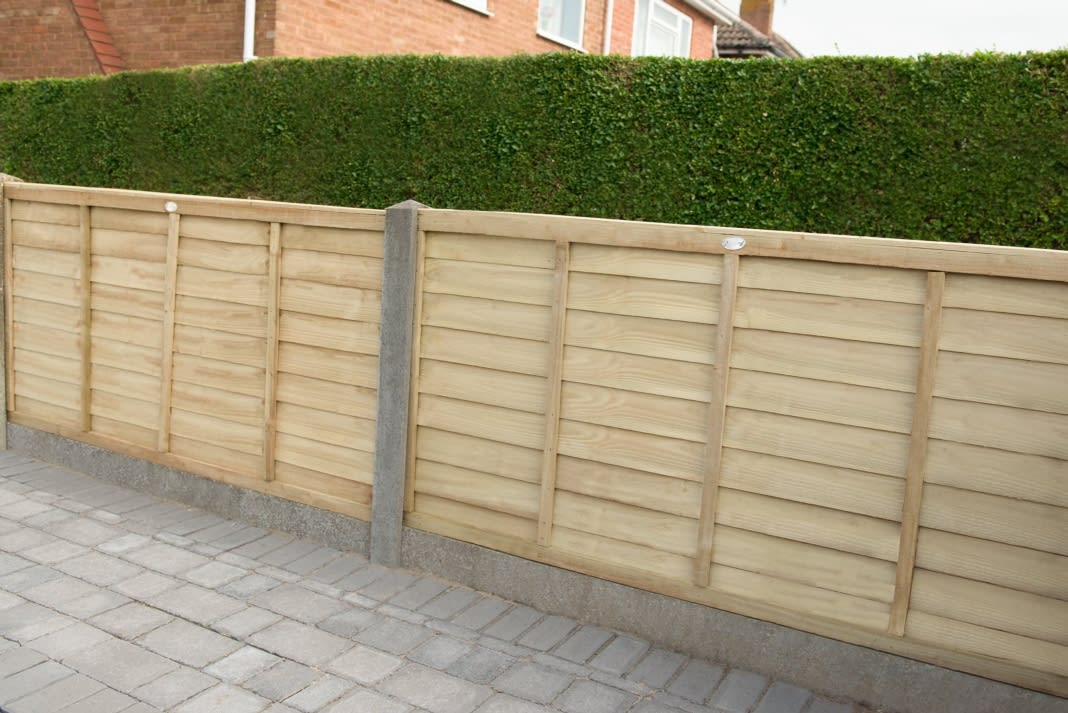
Generally fencing comes in 6ft wide panels. The height is the main choice you will need to make.
Front garden and low boundary fencing tend to be 3ft or 4ft high. Picket fencing is a popular front garden choice but there are many styles available.
For increased privacy and security, a 5ft to 6ft fence panel will be needed. 6ft is the tallest. Be aware that some 6ft fencing is actually 5’11 tall so always check the technical specification. This is a good rule of thumb for any fencing you are buying.
Fencing Construction
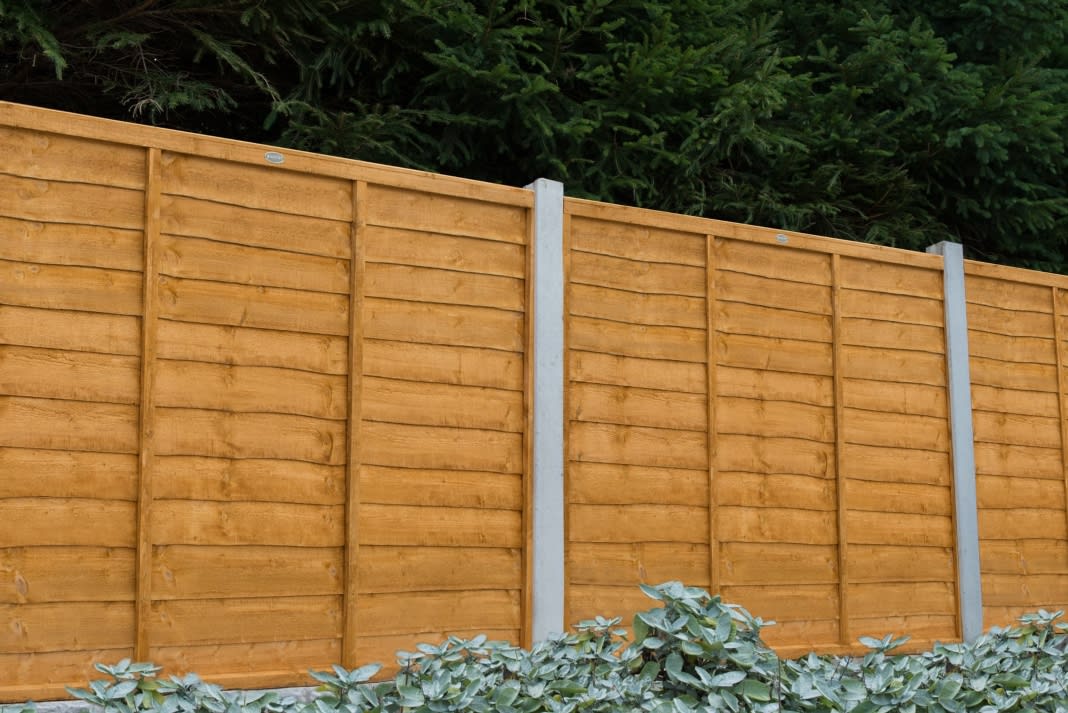
The construction of the fence panel you choose will depend on the job you want your fencing to do and the style of your garden design.
Overlap Fencing (see above image) is the most economical and one of the most traditional. It features horizontal boards overlapping each other. It is available with a rustic waney edge design or a contemporary straight edge finish.
Featheredge Fencing (below) is another traditional fence construction. The boards are vertical and tapered so one edge is thicker than the other. It copes well with seasonal movement.

Closeboard Fencing (below) also has vertical boards. These boards overlap and are sandwiched in a full perimeter frame. The full frame provides increased strength.
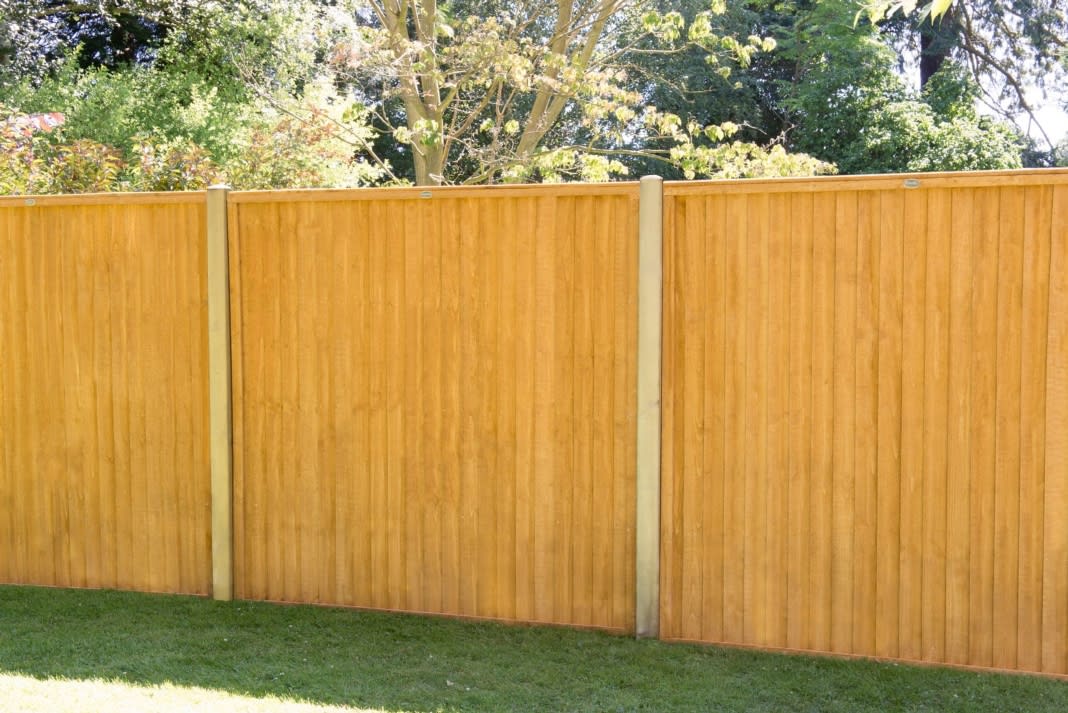
Decorative fencing designs include hit and miss, trellis topped and dome topped. These are pretty designs that are ideal for framing a country garden.
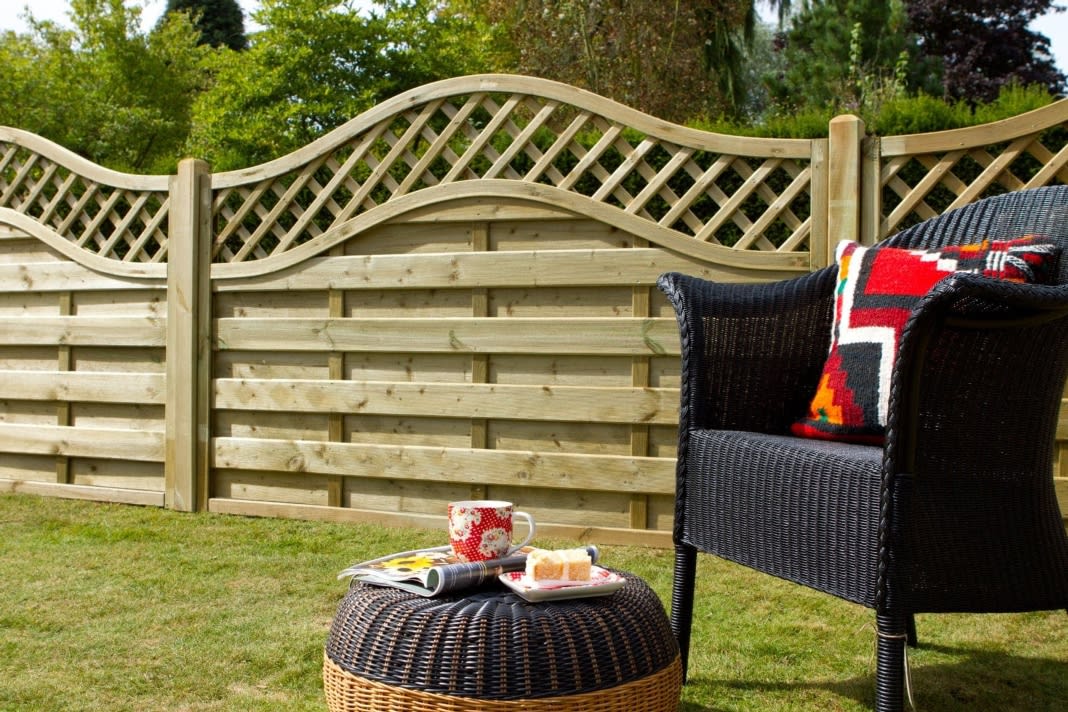
Modern fencing includes tongue and groove panels which boast a tight interlocking construction and modern, smooth lines. Perhaps the most popular contemporary fencing is slatted fencing. Available as single or double slatted, this sleek construction is at home in a modern garden. It even comes pre-painted in grey for a truly on-trend garden.
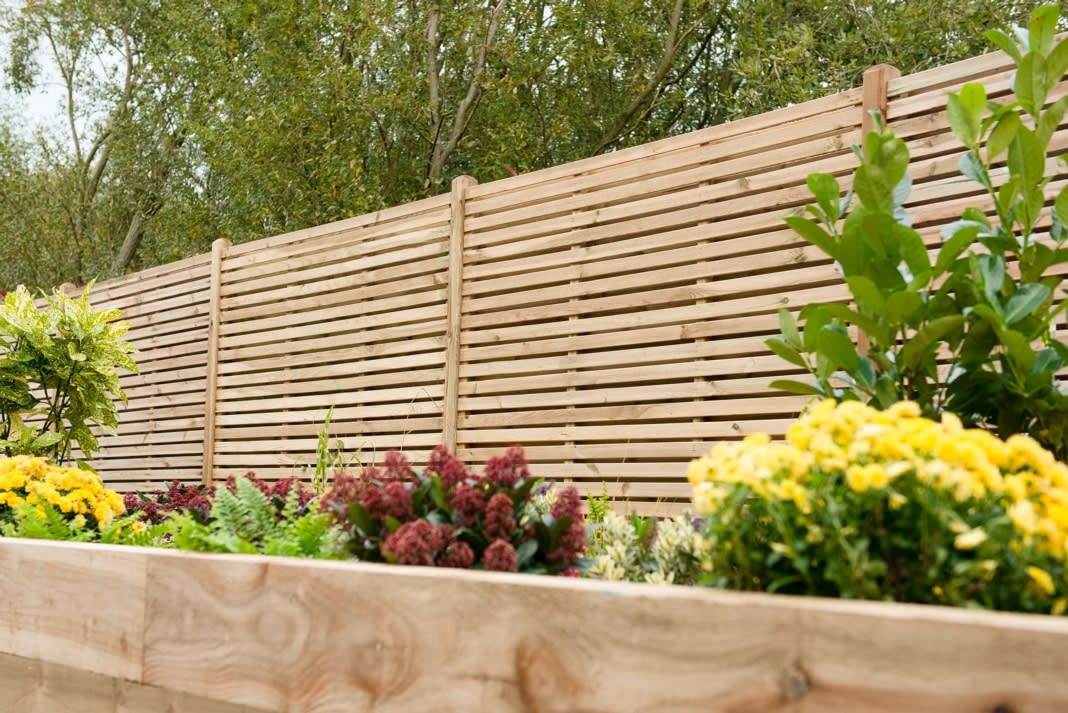
Fencing Treatment
Garden fence panels will either be dip-treated or pressure treated.
Dip-treated fencing has been dipped in preservative for a surface coating of protection. This will generally provide it with a 10-year resistance to rot and fungal decay but only if supported by annual retreatment. The colour is more orangey/amber.
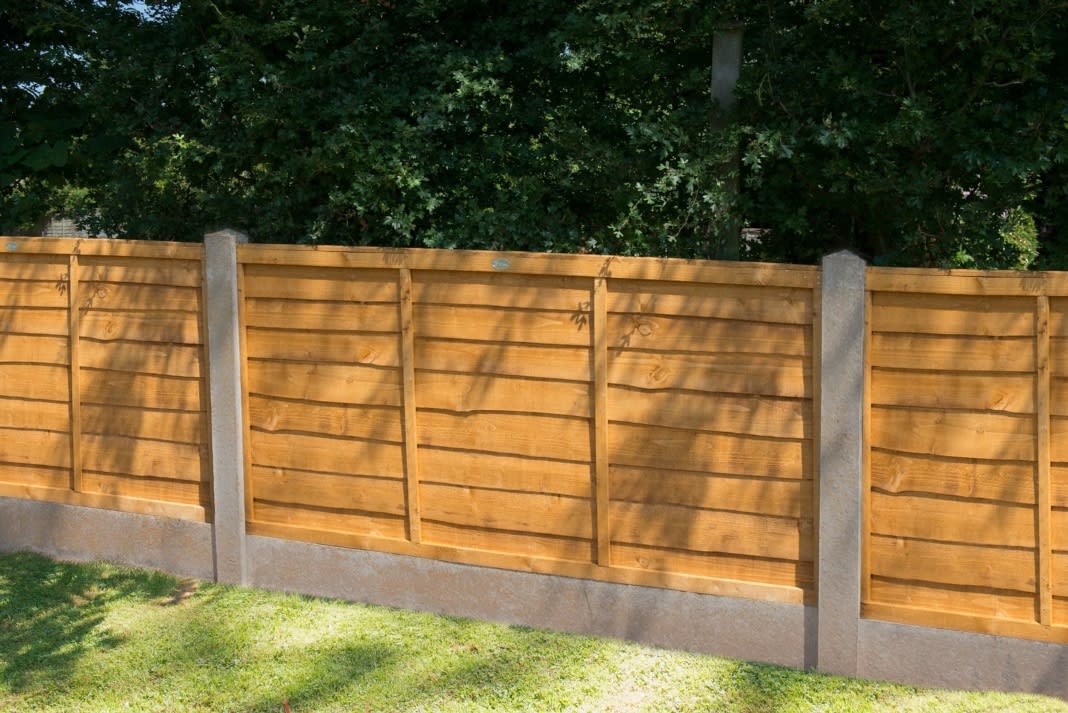
Pressure treated fencing has the benefit the preservative being forced deep within the wood. This provides it with around 15 years of anti-rot protection without the need for annual retreatments. However, always give it a seasonal check over. It can be painted or stained to freshen the appearance if desired.
Pressure treated timber may have a slight green tinge at first. This is just the residue from the treatment and will fade to a lighter, natural colour.
Fencing that has been pre-painted will not usually offer the same guarantees; the paint will need to be refreshed annually.
Fencing Accessories
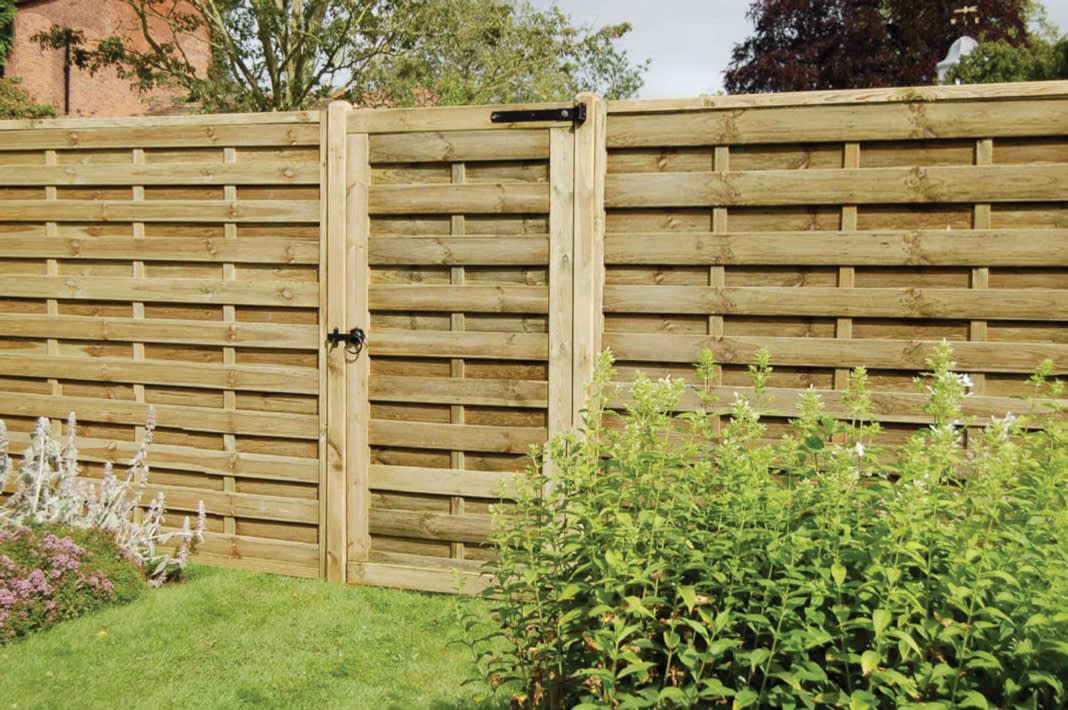
Fencing of course isn’t just fence panels. You will also need to think about fence posts, gravel boards and gates.
Fence posts come in timber or concrete. Timber is often considered a more attractive option and easier to work. Wooden fence posts must be pressure treated as they are inserted into the ground. Concrete fence posts offer excellent strength.
Gravel boards are essential for dip-treated fence panels. They protect the bottom of the fence panel from damp, providing greater longevity for the panel. Gravel boards will either be pressure treated timber or concrete.
Gates are usually either a 3ft low gate or a 6ft side gate. Many fence panels have matching gates to create a unified fence run.
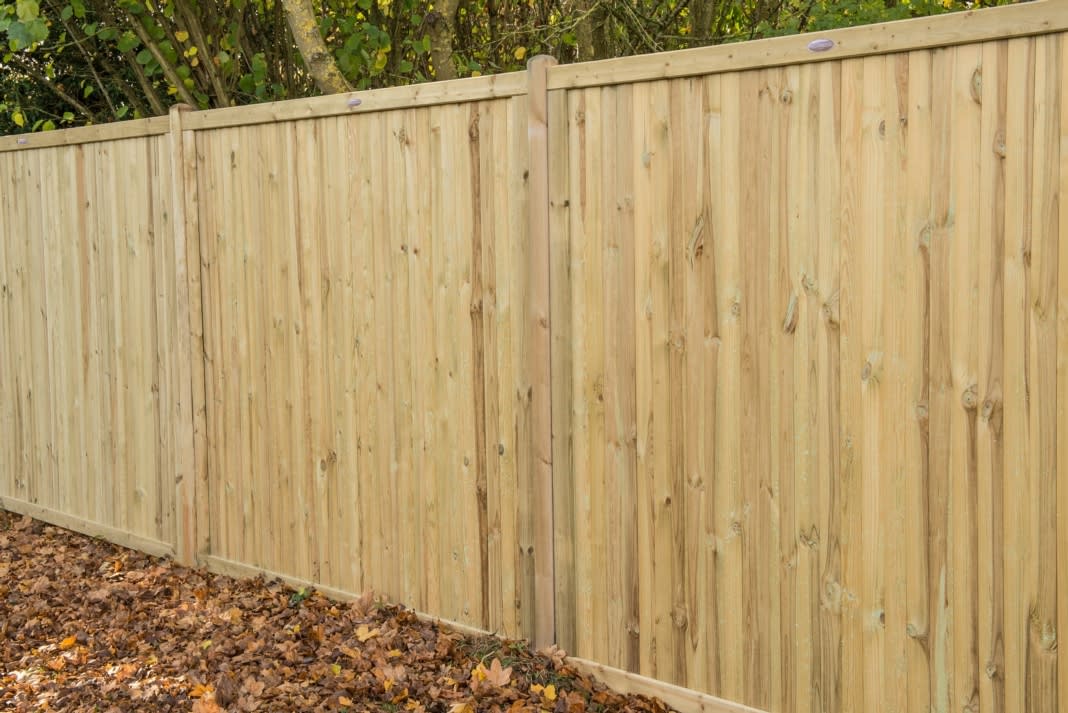
If you are installing fence posts onto a hard surface such as concrete, you will also need fence post shoes to secure the posts into the concrete.
To explore our huge range of fence panels and fencing accessories online, visit our Garden Buildings website. Please note that there are delivery surcharges for a few remote postcodes. T&Cs apply.
Whether you're patching up old fencing, replacing the whole garden boundary or adding on decorative accessories, we'd love to see how you're getting on! Share your before and after shots with the B&M Community on Facebook, Twitter & Instagram!


